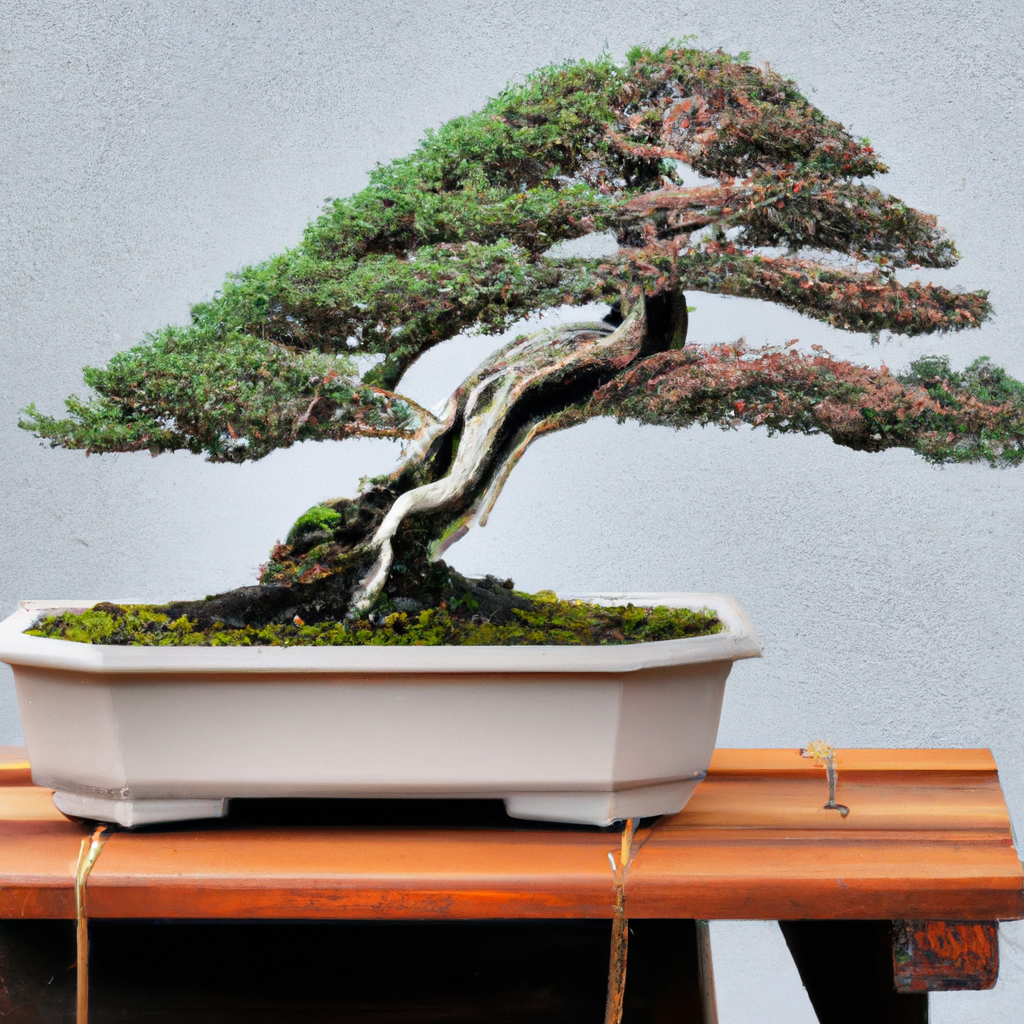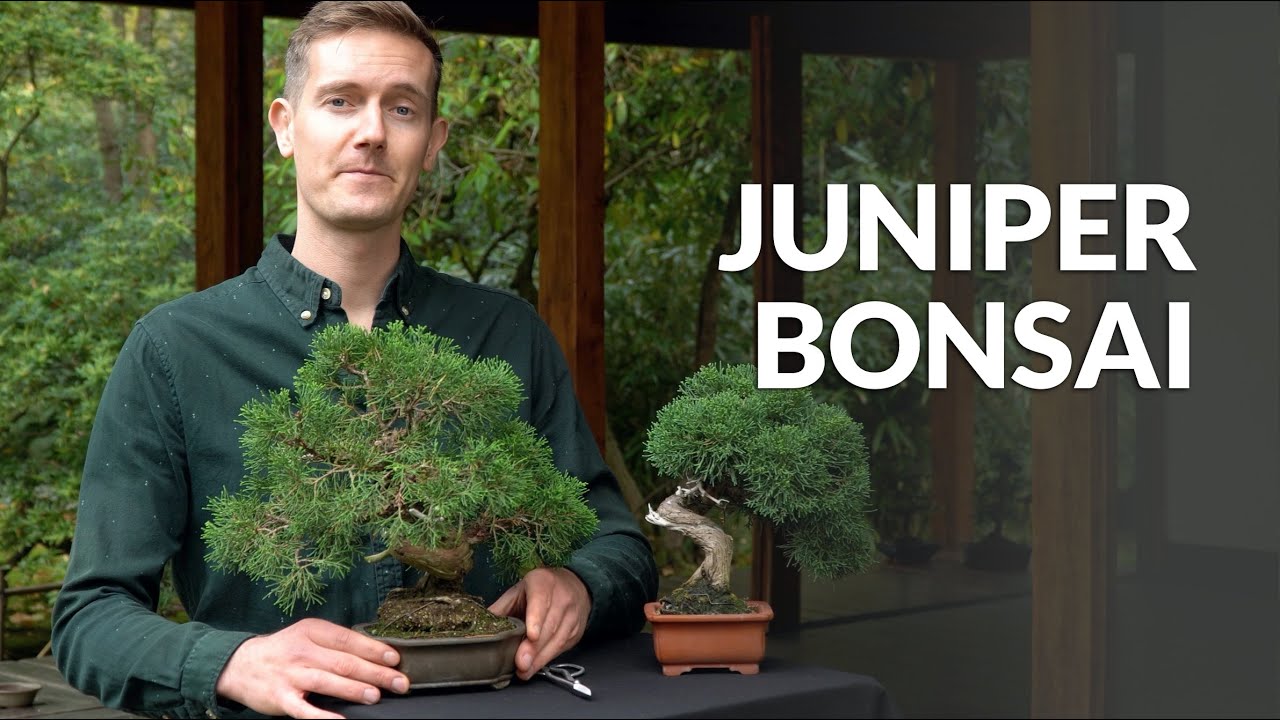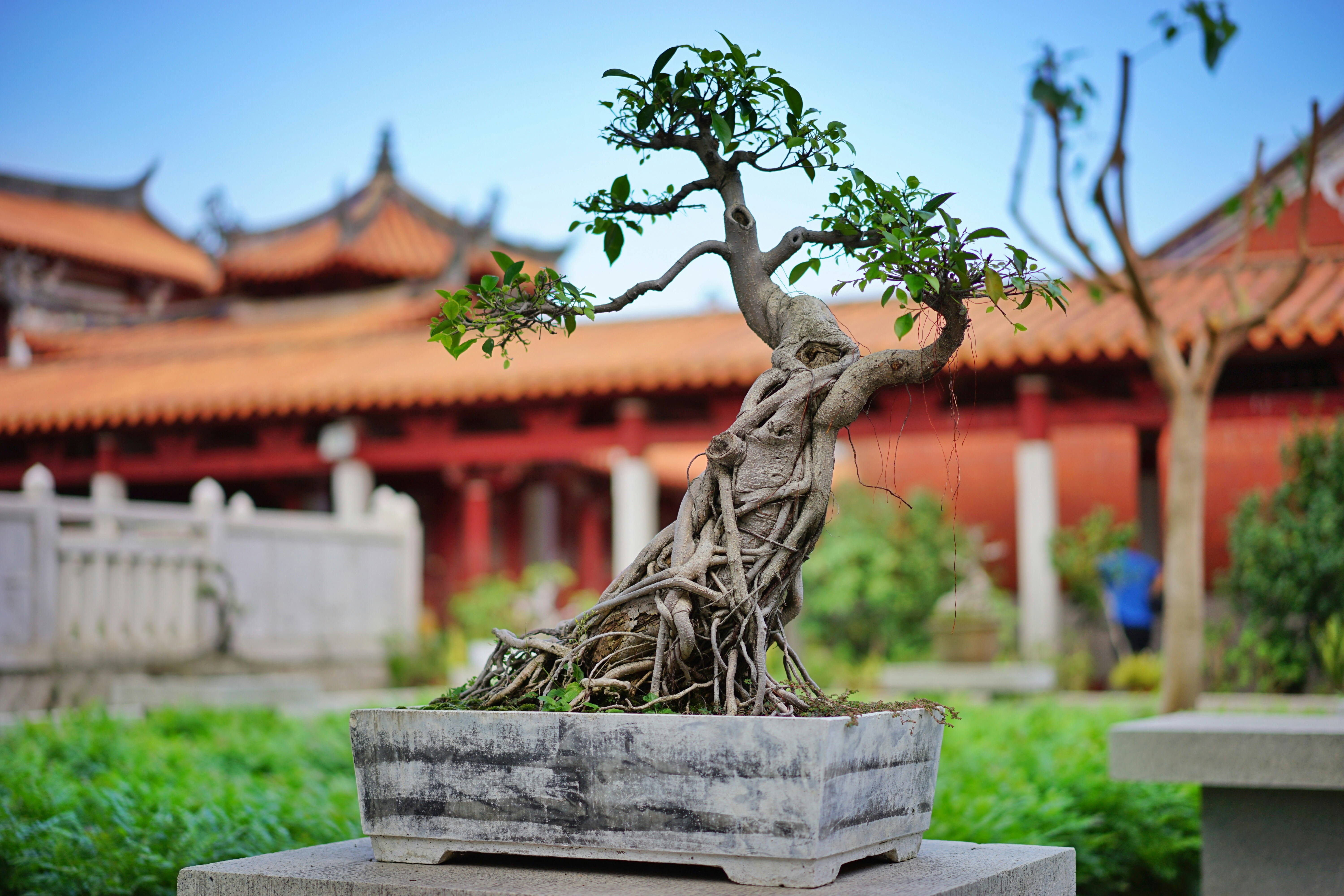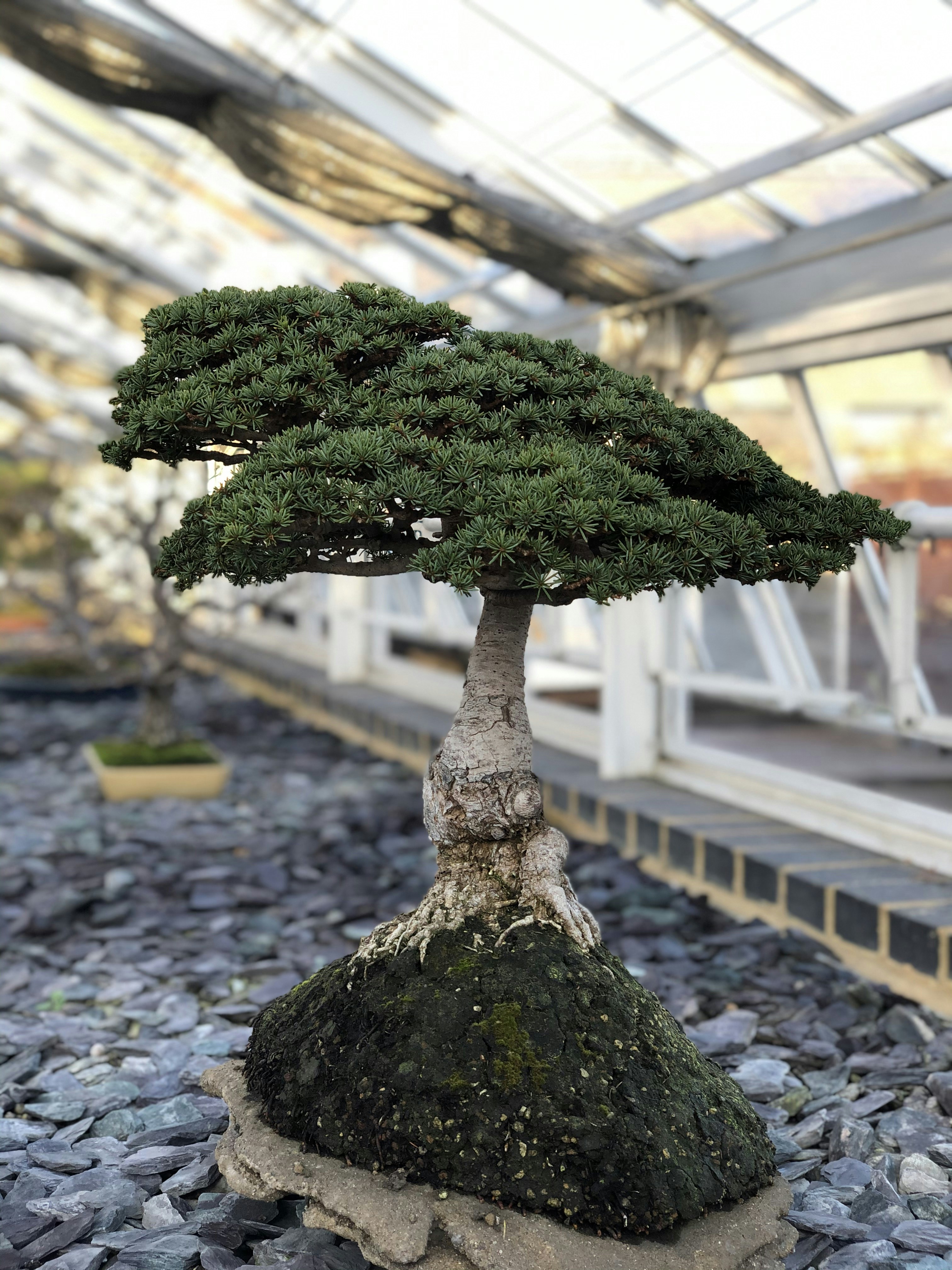Maintaining an indoor bonsai juniper can be a rewarding and enjoyable experience, but it requires proper care and attention. From finding the right location to watering and pruning techniques, this article will guide you through the essential steps and tips on how to care for your bonsai juniper indoors.
With a little patience and a friendly green thumb, you’ll be able to create a thriving miniature tree that adds a touch of nature and tranquility to your living space. So, let’s embark on this bonsai journey together and discover the secrets to a healthy and vibrant indoor bonsai juniper!
Choosing the right location
Lighting requirements
When it comes to caring for a bonsai Juniper indoors, one of the most important factors to consider is the lighting requirements. Junipers are known to thrive in bright, indirect sunlight. Therefore, it is essential to place your bonsai Juniper in a location that receives at least six hours of sunlight per day. A sunny windowsill or a well-lit room near a window would be ideal for providing your Juniper with the necessary amount of light for its growth.
Temperature considerations
In addition to lighting, temperature is another crucial factor to consider when choosing the right location for your bonsai Juniper. Junipers are cold-hardy trees and prefer cooler temperatures ranging between 60 to 75 degrees Fahrenheit (15 to 24 degrees Celsius). It is important to keep your Juniper away from drafty areas or extreme temperature fluctuations, such as near air conditioning vents or heating sources. Maintaining a consistent temperature will ensure the well-being and health of your bonsai Juniper.
Watering tips
Frequency of watering
Proper watering is essential for the health and vitality of your bonsai Juniper. The frequency of watering will depend on various factors such as humidity levels, pot size, and soil composition. As a general guideline, it is recommended to water your Juniper when the top inch of soil feels dry to the touch. Overwatering can lead to root rot and other issues, so it is important to strike a balance and avoid keeping the soil constantly wet or dry.
Watering techniques
When watering your bonsai Juniper, it is important to water thoroughly and ensure that the entire root ball is adequately moistened. You can either use a watering can or immerse the pot in a basin of water until the soil has absorbed enough moisture. Avoid watering the foliage directly, as this can lead to fungal diseases. Instead, water the soil around the base of the tree. Additionally, using filtered or distilled water can help prevent any potential mineral build-up or damage to the Juniper.
Choosing the right pot and soil mix
Choosing the right pot and soil mix is crucial for the overall health and growth of your bonsai Juniper. The pot should have sufficient drainage holes to allow excess water to escape, preventing waterlogging and root rot. Additionally, a well-draining soil mix is essential to ensure proper aeration and moisture control. A commonly used bonsai soil mix consists of a blend of Akadama, pumice, and lava rock. This mixture provides ideal water retention and drainage qualities, promoting the healthy development of your bonsai Juniper’s roots.
Pruning and shaping
Understanding growth patterns
Understanding the growth patterns of your bonsai Juniper is vital for proper pruning and shaping. Junipers exhibit vigorous growth and tend to form new growth in the direction of the sunlight. As an indoor bonsai, it is important to take this growth pattern into consideration when shaping your Juniper. By regularly observing the growth habits of your Juniper, you can anticipate where new growth will occur and strategically prune to maintain an aesthetically pleasing shape.
Pruning techniques
Pruning is an essential part of bonsai care and is necessary to maintain the desired shape and size of your Juniper. When pruning your bonsai Juniper, it is important to use sharp and clean pruning shears to minimize damage to the tree. Start by removing any dead, damaged, or crossing branches. Next, carefully trim back excessive growth to maintain the desired shape. It is also crucial to thin out the foliage to ensure proper air circulation and light penetration, which aids in the overall health and vitality of your bonsai Juniper.
Wiring and shaping
Wire can be used to shape and train the branches of your bonsai Juniper. To wire effectively, begin by choosing a suitable gauge wire that is slightly thicker than the branch you intend to shape. Carefully wrap the wire around the branch, making sure not to apply too much pressure to avoid damaging the bark. Gently guide the branch into the desired position, taking care not to bend it too sharply. Leave the wire in place for a sufficient period to allow the branch to set in its new shape, but avoid leaving the wire on for too long to prevent wire marks from forming.
Fertilizing requirements
Choosing the right fertilizer
Fertilizing is an essential aspect of caring for a bonsai Juniper indoors. When choosing a fertilizer for your Juniper, it is important to select one that is specifically formulated for bonsai trees. Look for balanced fertilizers with equal amounts of nitrogen, phosphorus, and potassium (N-P-K). These nutrients are crucial for the overall growth, development, and vigor of your bonsai Juniper. Additionally, it is advisable to use a slow-release or organic fertilizer to minimize the risk of over-fertilization and prevent burnt roots.
Frequency of fertilizing
The frequency of fertilizing your bonsai Juniper will depend on the type of fertilizer used and the specific needs of your Juniper. As a general guideline, it is recommended to fertilize your indoor Juniper every four to six weeks during the growing season, which typically occurs from spring to autumn. During the dormant winter period, it is advisable to reduce or cease fertilization to allow the tree to rest. Proper fertilization will provide your bonsai Juniper with the necessary nutrients for healthy growth and vibrant foliage.
Preventing pests and diseases
Common pests
Despite being generally hardy, bonsai Junipers can still be susceptible to certain pests. Some common pests that can affect your Juniper include spider mites, scale insects, and aphids. These pests can cause damage by sucking sap from the leaves and weakening the tree. Regularly inspect your Juniper for any signs of pests, such as webbing, sticky residue, or distorted foliage. If you notice any pests, prompt action is essential to prevent infestations from spreading to other plants in your collection.
Recognizing symptoms of diseases
In addition to pests, bonsai Junipers can also be susceptible to various diseases. Some common diseases that can affect Junipers include fungal infections, root rot, and needle blight. Symptoms of diseases may include yellowing or browning of foliage, stunted growth, or the presence of fungal growth. It is important to promptly recognize and address any symptoms to prevent the spread of diseases and maintain the health of your bonsai Juniper.
Treatments and prevention measures
To prevent and control pests and diseases, it is important to practice good sanitation and hygiene practices. Regularly check and clean your bonsai Juniper, removing any dead or decaying foliage. In the case of pests, you may need to intervene with appropriate insecticidal soaps or oils specifically formulated for use on bonsai trees. When it comes to diseases, proper watering practices and avoiding overwatering can help prevent root rot and fungal infections. If necessary, consult with a specialized bonsai professional for specific treatments and prevention measures.
Maintaining humidity
Humidity requirements
Junipers are naturally adapted to thrive in low humidity environments. However, when grown indoors, providing adequate humidity can enhance the health and growth of your bonsai Juniper. A humidity level of around 40 to 50 percent is generally sufficient. If your indoor climate is particularly dry, you can use simple techniques to increase humidity around your Juniper, such as using a humidifier, placing a tray of water near the bonsai, or grouping multiple plants together to create a microclimate.
Misting techniques
Misting is a popular technique used to increase humidity around bonsai trees. To mist your bonsai Juniper, use a spray bottle filled with room temperature water and gently spray the foliage, taking care not to saturate the soil. Misting should be done in the morning or early evening to allow time for the foliage to dry before the cooler nighttime temperatures. Regular misting can help prevent the foliage from drying out and maintain the optimal humidity levels for your bonsai Juniper.
Using humidity trays
Another effective way to maintain humidity around your bonsai Juniper is by using humidity trays. A humidity tray consists of a shallow tray filled with water, with the bonsai pot placed on top of small supports to prevent direct contact with the water. The evaporating water creates a localized humid microclimate around the tree, providing the necessary moisture for your Juniper. It is important to regularly check and refill the humidity tray to ensure a consistent humidity level.
Repotting guidelines
Determining when to repot
Repotting is an essential part of bonsai Juniper care and helps maintain the health and vitality of the tree. The frequency of repotting will depend on various factors, such as the age of the tree, the size of the pot, and the vigor of growth. As a general guideline, it is recommended to repot your bonsai Juniper every two to three years, usually in early spring before the tree enters its growth phase. Look for signs such as roots circling the pot or the soil becoming compacted, indicating the need for repotting.
Steps for repotting
When repotting your bonsai Juniper, it is important to follow a few key steps to ensure a successful process. Start by carefully removing the tree from its current pot, gently loosening the roots with a root hook or chopstick. Next, trim any circling or excessively long roots to stimulate new growth. Prepare a suitable-sized pot with adequate drainage holes and place a layer of the chosen bonsai soil mix at the bottom. Position the Juniper in the pot and add more soil mix, gently firming it around the roots. Finally, water the freshly repotted Juniper thoroughly to settle the soil.
Choosing the right pot size
Choosing the right pot size is crucial for the health and development of your bonsai Juniper. A pot that is too small can restrict root growth and lead to stunted development, while a pot that is too large can retain excess moisture and cause root rot. Ideally, the new pot should be slightly larger than the previous one to allow for future growth. When selecting a pot, consider the overall size and style of your bonsai Juniper. Additionally, ensure that the pot has adequate drainage holes to prevent waterlogging.
Winter care
Protecting from cold drafts
During the winter months, it is important to protect your bonsai Juniper from cold drafts. Junipers can withstand colder temperatures, but exposure to cold drafts can cause stress and damage the tree. Keep your Juniper away from doors, windows, or any area where it may be subjected to cold drafts. If necessary, you can use barriers such as curtains or plastic wrap to shield your bonsai from direct exposure to chilly winds.
Adjusting watering and fertilizing
In the winter, the growth rate of your bonsai Juniper slows down, and less water and fertilizer are required. Adjust your watering frequency accordingly, allowing the soil to dry out slightly more between waterings. Be cautious not to overwater, as the slower growth during this period can make the tree more susceptible to root rot. Similarly, reduce the frequency of fertilizing to once every two to three months or suspend fertilization altogether, as the tree’s metabolic activity decreases.
Providing supplemental lighting if necessary
During the winter months when natural sunlight may be limited, providing supplemental lighting can be beneficial for your bonsai Juniper. Consider using grow lights or fluorescent lights to supplement the available light and ensure adequate photosynthesis for the tree. Position the lights at an appropriate distance to avoid burning the foliage and provide a photoperiod of around 10 to 12 hours daily. Supplemental lighting will help maintain the health and vitality of your bonsai Juniper during the winter season.

Styling and display ideas
Traditional styles
Bonsai Junipers can be styled in various traditional bonsai styles, each with its unique characteristics and artistic appeal. Some popular traditional styles include formal upright, informal upright, slanting, cascading, and windswept. These styles aim to mimic the growth patterns and aesthetics of full-sized trees in nature. Research and explore the different traditional styles to find the one that resonates with you and suits the overall look and feel of your bonsai Juniper.
Modern and unique displays
While traditional styles offer a timeless appeal, modern and unique displays can add a touch of creativity and personalization to your bonsai Juniper. Consider incorporating elements such as stones, driftwood, or carefully selected accent plants to create visually appealing compositions. Experiment with different containers and display stands to showcase your bonsai Juniper in a way that reflects your personal style and adds a modern flair to your indoor space. Let your creativity and imagination guide you in designing a display that truly stands out.
Troubleshooting common issues
Yellowing or browning leaves
If you notice yellowing or browning leaves on your bonsai Juniper, it may be a sign of overwatering, underwatering, or nutrient deficiencies. Evaluate the watering practices and adjust accordingly, ensuring that the soil is neither too wet nor too dry. If nutrient deficiencies are suspected, consider adjusting the fertilization regimen to provide the necessary nutrients. Additionally, ensure that your Juniper is receiving adequate light and is not exposed to extreme temperature fluctuations, which can also contribute to leaf discoloration.
Root rot
Root rot is a common issue that can affect bonsai Junipers, especially when proper watering practices are not followed. Overwatering or poorly draining soil can lead to waterlogged conditions, suffocating the roots and promoting the growth of harmful fungi. If you suspect root rot, carefully remove the bonsai from the pot and inspect the roots for any signs of rotting, such as a foul smell or mushy texture. Trim away any affected roots and repot the Juniper in fresh, well-draining soil to promote healthy root growth.
Wilting or drooping branches
Wilting or drooping branches can be indicative of various issues, including underwatering, root problems, or pest infestations. First, check the soil moisture and adjust the watering accordingly, ensuring that the soil is neither too dry nor too wet. If the soil appears adequately moist, inspect the roots for any signs of rot or damage. Pests, such as spider mites or aphids, can also cause wilting by sucking out sap from the branches. Promptly address any underlying issues to revive and restore the vigor of your bonsai Juniper.






